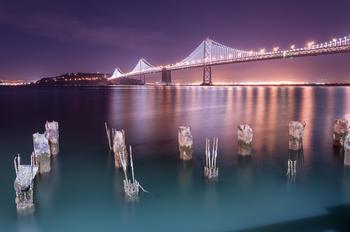 The advent of LED lighting has changed the way in which lighting is used. The addition of intelligent controls and toning capabilities in LED fixtures opens up new opportunities for designers. The LED's high efficiency, dimming capability, long life, and other advantages make color-changing lamps more efficient, cost-effective, and easier to obtain. The Digital Signal Controller (DSC) can drive a variety of innovative applications, enabling more efficient LED driving, more precise color control, and better communication with the outside world. The above combination of advantages allows designers to have greater freedom to develop highly differentiated LED lighting fixtures.
The advent of LED lighting has changed the way in which lighting is used. The addition of intelligent controls and toning capabilities in LED fixtures opens up new opportunities for designers. The LED's high efficiency, dimming capability, long life, and other advantages make color-changing lamps more efficient, cost-effective, and easier to obtain. The Digital Signal Controller (DSC) can drive a variety of innovative applications, enabling more efficient LED driving, more precise color control, and better communication with the outside world. The above combination of advantages allows designers to have greater freedom to develop highly differentiated LED lighting fixtures. Low-power indicator LEDs are basic to many products, and most engineers are familiar with their simple design. As long as a voltage source and a series resistor with the correct value, the LED current can be maintained at a level of less than 5 mA. The LED flashes through a general-purpose input-output (GPIO) pin connected to the microcontroller; however, a forward current in excess of 350 mA is cascaded together to form a high-brightness, high-current LED. It becomes quite complicated. Designers face the challenge of current control in addition to temperature changes and the high temperature issues inherent in LEDs.
Current control <br> <br> high brightness LED need to maintain a relatively high constant current to maintain a certain brightness and color. The luminous flux of an LED is proportional to the forward current flowing through the LED. To achieve consistent color and light output, the key is a constant forward current. The forward current will change along with the voltage source, causing the light emitted by the LED to change. Therefore, it is necessary to use a power supply that actively adjusts the forward current to drive.
Temperature control <br> <br> general, LED's along with temperature rise of the voltage is increased, even if the forward current is constant and adjusted. High-power LEDs can generate heat, which can lead to reduced LED life and early failure. Controlling the forward current of the LED allows individual designs to determine the heat dissipation level based on the target forward current and the estimated forward voltage. Using a temperature sensor provides a way to monitor temperature conditions.
The color control LED can change the output light almost instantaneously, suitable for lamps that need to change color quickly. Simply adjust the brightness of each LED to create any color with red, green, and blue LED strings. Increasing or decreasing the forward current of each LED is one of the methods, but changing the forward voltage not only changes the brightness but also slightly changes the color of the LED. It will cause problems in applications that require precise color.
Another method is to use pulsed current. This method can provide the same dimming effect without making the color change appreciably. The red dashed line in Figure 1 represents the change in brightness that the average pulse current can create while maintaining the LED forward voltage consistency. There will be no noticeable change in color.
Kitchen Exhaust Hood,Gas Hob 4 Burner,Stainless Steel Gas Hob,4 Burner Gas Cooker Hob
xunda science&technology group co.ltd , https://www.gasstove.be